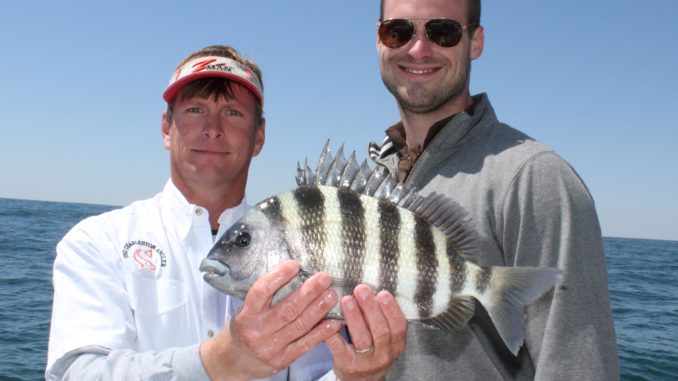
Mid-morning tide changes have been most productive times
The time to catch Lowcountry sheepshead is now, according to Capt. Robert Olsen of Knot@Work Charters, and the best place to catch them is on the structure around Charleston’s nearshore reefs, including the Lowcountry Angler’s Reef and the 4Ki Reef.
“The SCDNR has a list of near shore reefs with GPS coordinates available, and these are good places to catch sheepshead this time of year,” said Olsen, who stresses the importance of using electronics to find the structure. But he isn’t talking about just using depth finders.
“Depthfinders help put you over the structure,” said Olsen as he lowered a small submarine-shaped object down the side of his 31-foot boat, “but this camera shows you exactly what the structure looks like and whether you are on one corner of it or the other.”
It also shows the presence — or absence — of fish.
The camera’s color monitor shows Olsen if he needs to adjust his position by letting out or pulling in some anchor line, but if he doesn’t like what he sees, he will take the time to pull the anchor and completely reposition the boat. He said being just a few feet off can mean the difference in not getting a bite and being swamped with fish.
“Some sheepshead are biting inshore in places like the Grillage, but the quality ones are on nearshore structure like these reefs,” said Olsen (843-442-7724).
Fiddler crabs are his main bait choice, but he likes using shrimp when the black sea bass aren’t a problem – and right now, they are. Even with fiddlers, Olsen and his clients are having to weed through their share of black sea bass, but it has been worth it, with catches of sheepshead in the 4- to 10-pound range common, with some bigger fish mixed in.
A typical Carolina-rig with a 1-ounce or 2-ounce sinker, a barrel swivel, a 12- to 18-inch leader, and a No. 3 hook make up the terminal tackle, and Olsen uses 6- to 7-foot, medium heavy rods with spinning reels in the 2000 to 4000 size range.
Olsen advises his clients to drop their bait straight down, keeping tension on the line as it spools off, then reel up a few turns. If he identifies weeds on the bottom, he will have them reel up enough to get out of the weeds. Then, it’s a matter of waiting on a bite and setting the hook.
“You want to give it a good steady hookset, but some people make the mistake of setting the hook as if they were largemouth bass fishing,” he said. “Just a good steady hookset is all you need.”
While these fish bite throughout the day, Olsen said it always picks up during a shift in the tides, and if that shift takes place between 8 to 10 a.m., the fishing can be phenomenal.

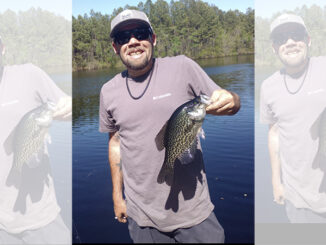
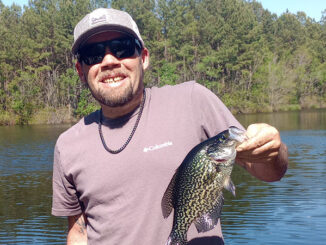
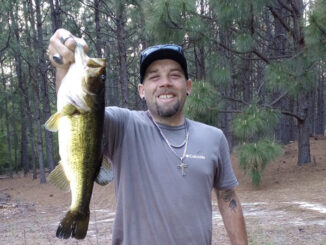
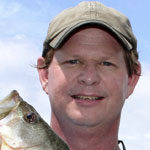
Be the first to comment